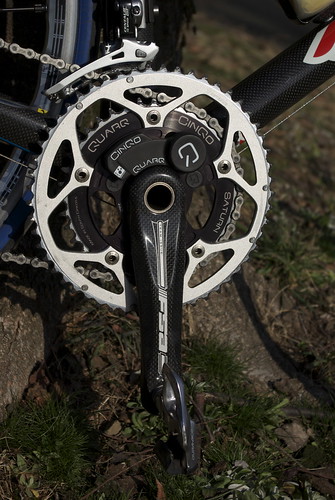
photo credit: mitsukuni
Ed Note: This post is about the broader concept of training with power, and doesn’t include specifics on the application of power to triathlon training. If you’d like to learn more about how we have pushed the limits of powermeters in the triathlon space, you can either purchase the second edition of Andy Coggan’s book “Training and Racing with a Power Meter” and refer to our chapter on triathlon or for more detailed information, purchase the “EN Power Webinar” which includes over four hours of audio + written guidance on how to use your powermeter.
Affordable powermeters are the most impactful piece of equipment to dominate the triathlon space since the advent of the aerobars. Period. Now triathletes everywhere can train and race with almost laser-like precision, achieving new levels of fitness and performance that were once out of reach. But you don’t have to own a powermeter in order to reap the training and racing benefits of a coaching methodology built on using power.
Question: “Do I need to have a powermeter in order to be able to train with Team EN or to use one of your training plans?”
This is one of the top questions we get inside Endurance Nation. And the answer is always the same: Not at all. Having a power meter will help you follow the training plan, but know that all of our training plans also include heart rate and perceived exertion guidance. The difference is that every single one of our training plans is written from the perspective of power.
Answer: “You’ll be training like you have power whether you own a PM or not!”
As one of the earliest adopters of training with power in the triathlon space, our entire coaching methodology is built upon what we have learned from training and racing with power. We quickly realized that training with power afforded the opportunity to quantify the work done in each workout. We used that information to create training plans that (A) use fitness benchmarking to drive workout levels and race performance and (B) leverage intensity to make manageable, effective plans that fit the age-group triathlete’s busy lifestyle.
“Work…WORKS!”
You might not feel like a powermeter athlete, but you are doing the same interval workouts and build up that a regular power user does. While you don’t have that fancy computer on your handlebars, your muscles don’t know the difference — they are just working really hard and getting stronger.
Here are a few of our key concepts
- Fitness is defined as your ability to do work (i.e. Move your bike).
- The fitter you become, the more work you can do (i.e. Move your bike faster).
- Working harder, in shorter training sessions, builds equivalent fitness to training long hours (i.e. You save time).
At the end of the day, whether you train with power or not is not really a function of how much disposable income you have. It’s what’s between your ears that matters. If you’re ready to commit to a power-training approach, and to apply that knowledge to direct your training and racing, then you’ll be well on your way to achieving your potential on race day.
To learn more about our unique training approach feel free to browse our FREE online training manual. If you are interested in a training plan, you can view all the options in our online store here. If you have further questions, please ask us on Facebook!

Leave a Reply